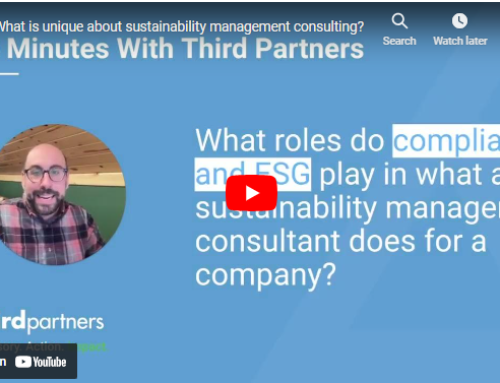So went the latest Restoration Hardware direct mail campaign that shipped this month. Customers were sent 13 catalogs, bundled together in plastic wrap, weighing 17 pounds. And while Restoration Hardware defends this as a sustainable practice, it has rather predictably ruffled some feathers. Below we run some quick numbers, explain why this is a poor strategy, and identify what Restoration Hardware could have done differently and key takeaways for marketers.
340 Pounds of Paper per Customer Order
- 17 pounds of paper per customer / 5% customer order rate
- = 340 pounds of paper per customer order
3 Reasons this is Bad Marketing and Bad Sustainability Strategy
The brash size of the catalog, combined with the tone Restoration Hardware uses to claim it is sustainable, create a toxic and confusing strategy. Below is a breakdown of what went wrong, followed by ideas for next time.
- 1. Mixed Signaling: The contradiction between using PEFC certified wood and printing 17 pounds of paper per recipient
- Using certified wood does not necessarily mean that an initiative is sustainable. Certification programs are a signal to customers that your company understands responsible resource consumption, but the brand value of the certification is meaningless unless it is used alongside practices that also signal responsible resource consumption.
- In other words: you can talk the talk, but customers will see the hypocrisy unless you walk the walk. A massive catalog, magnitudes larger than average, from certified source wood is confusing at best, and hypocritical at worst. Yes, PEFC certification is a good thing, but Restoration Hardware uses it to imply a level of sustainability that simply cannot exist in a campaign that uses this much paper.
- 2. Greenwashing: Establishing a grant for forest certification has nothing to do with this campaign
- First, this grant has nothing to do with the catalog campaign. Both the grant and the catalog can exist without the other, and at no point does the grant mention its relevance to the catalog.
- Second, there is no amount of detail on various significant aspects of the grant, such as the amount given (it could be $1,000), any repeating annual commitment, how much acreage this grant can support, or whether the wood from these forests has anything to do with Restoration Hardware or its catalog. It paints a very broad picture of its involvement, and provides no clear metrics.
- 3. Unsubstantiated Carbon Claims: Heavier load = Lighter Carbon Footprint
- Aside from this statement being literally impossible—the heavier a package, the more fuel needed to move it around—the implied claim is that the act of bundling all catalogs together and sending them once is somehow better for the environment than sending them one catalog at a time. But they do not back up the claim with any data.
- Does bundling the catalogs mean Restoration Hardware also changes its paper source, printing process, printing location, and shipping destinations? Probably not. If all that is the same in either shipping scenario, then the act of bundling all catalogs into a heavier package and shipping it once likely has little-to-no effect on its carbon footprint. And since they did not state how* the carbon footprint is lighter, it is an unsubstantiated claim that constitutes greenwashing yet again.
- *Side note: if the how is that they used carbon offsets, that is a bogus claim. Carbon offsets could have been purchase for catalogs in previous years, but perhaps not directly from the carrier.
7 strategies and ideas to help Restoration Hardware next time
- Send a return-stamped postcard to all intended recipients, asking them to return the card if they want to receive the huge catalog. Send the catalog only to the respondents.
- Send the catalog only to a select set of high-value customers. In marketing speak: segmentation and targeting. Perhaps this was part of the strategy, but there is no way to know without inside knowledge. Judging from the reactions, it was sent to lots of people with marginal affinity to the brand.
- Use consumer behavior to target catalogs. According to Apartment Therapy and its interview of CEO Gary Friedman, 9.2% of its sales come from catalogs. Figure out who orders from the catalog, and send books to them. Focus on digital marketing for everyone else. This has the added benefit of saving money, and not upsetting customers.
- Send a twice-annual email asking customers if they want to opt-out of direct mail, before and after the big catalog is mailed. I know… cutting down a customer mail file sounds crazy. It’s actually quite savvy because it helps ensure your marketing is delivered to the people that actually want it.
- Don’t let carbon offsets justify wasteful practices. Carbon offsets are tricky: they are better than nothing, and often support innovative projects that absorb carbon from the atmosphere. Yet, no matter how positive they may be, the best route is to avoid emissions in the first place. Carbon offsets should not be the justification to be indiscriminate about resource usage.
What can retailers and marketers learn from this?
- Even though a marketing strategy is less environmentally harmful than the old strategy, it doesn’t necessarily mean the new strategy is environmentally sustainable.
Third Partners is a team of creative and collaborative sustainability consultants based in New York City. This is the first in a series of articles focused on building the case for sustainability at brands we love. Contact Third Partners today.


